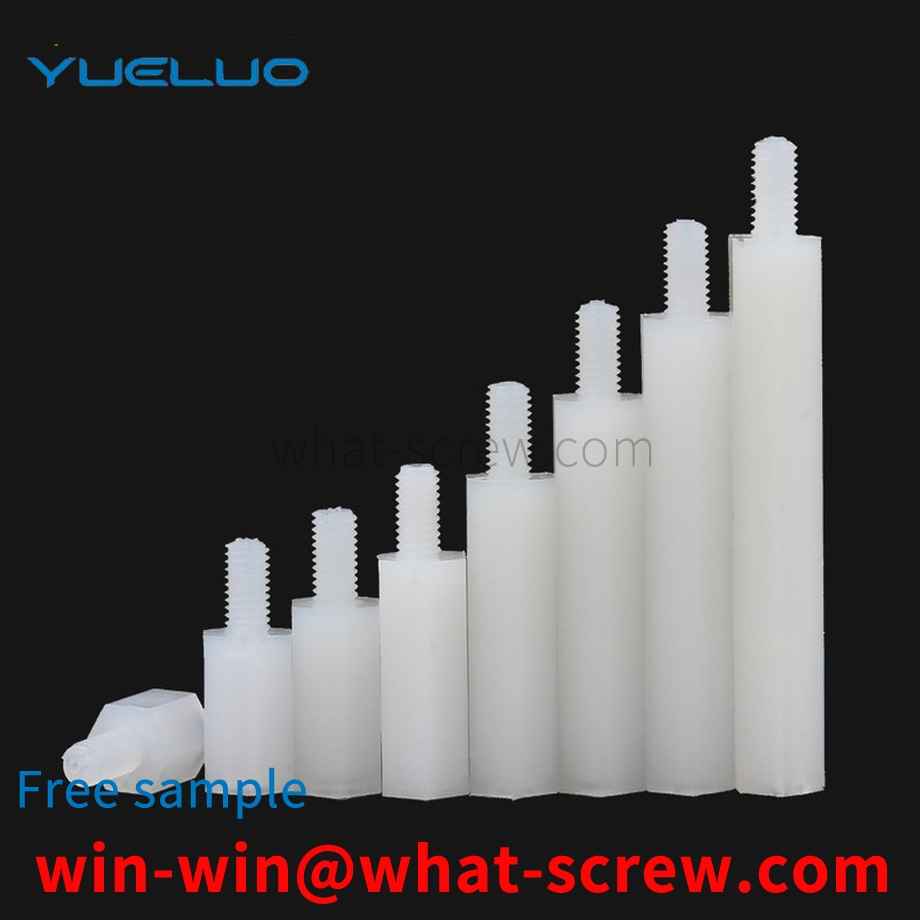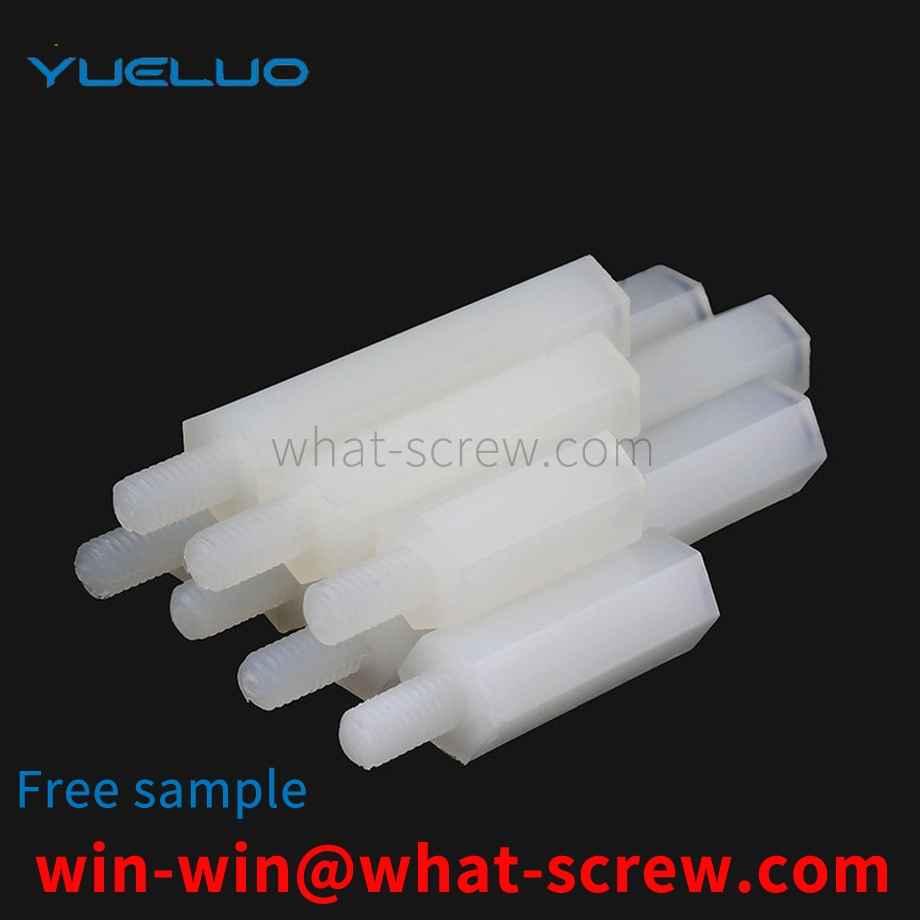The spring screw is a tool that uses the physical and mathematical principles of the oblique circular rotation of the object and the frictional force to fasten the machine parts step by step; the screw is a common invention in people's production and life for thousands of years. According to the application field, Screws have a wide range of applications.
Bolt: A type of fastener consisting of a head and a screw (a cylinder with an external thread), which needs to be matched with a nut to fasten and connect two parts with through holes. This form of connection is called a bolted connection. If the nut is unscrewed from the bolt, the two parts can be separated, so the bolt connection is a detachable connection. [1] Stud: A type of fastener that has no head and only has external threads on both ends. When connecting, one end of it must be screwed into the part with the internal threaded hole, the other end must pass through the part with the through hole, and then the nut must be screwed on, even if the two parts are tightly connected as a whole. This form of connection is called a stud connection, which is also a detachable connection. It is mainly used for occasions where one of the connected parts is thick, requires a compact structure, or is not suitable for bolt connection due to frequent disassembly. [1] Screw: It is also a type of fastener consisting of a head and a screw. It can be divided into three categories according to the purpose: machine screws, set screws and special-purpose screws. Machine screws are mainly used for a fastened connection between a part with a fixed threaded hole and a part with a through hole, without the need for nut matching (this connection form is called screw connection, which is also a detachable connection; it can also be Cooperate with the nut, it is used for the fast connection between two parts with through holes.) The set screw is mainly used to fix the relative position between the two parts. Special purpose screws, such as eyebolts, are used for hoisting parts. [1] Nuts: with internal threaded holes, generally in the shape of a flat hexagonal column, but also in a flat square column or flat cylindrical shape, with bolts, studs or machine screws, used to fasten and connect two parts, make it a whole. [1] 5. Self-tapping screw: Similar to machine screw, but the thread on the screw is a special thread for self-tapping screw. It is used to fasten and connect two thin metal components to make them a whole. Small holes need to be made in advance on the components. Due to the high hardness of this kind of screw, it can be directly screwed into the hole of the component, so that the Forming a corresponding internal thread [1] 6. Wood screw: It is also similar to a machine screw, but the thread on the screw is a special thread for wood screws, which can be directly screwed into wooden components (or parts) to connect a band through The metal (or non-metallic) part of the hole is fastened to a wooden member. This connection is also a detachable connection. [1] 7. Washers: A type of fastener with an oblate annular shape. It is placed between the supporting surface of the bolt, screw or nut and the surface of the connecting part, which increases the contact surface area of the connected parts, reduces the pressure per unit area and protects the surface of the connected parts from damage; another type of elastic washer, It can also play a role in preventing the nut from loosening. [1] 8. Retaining ring: It is installed in the shaft groove or shaft hole groove of the machine and equipment, and plays the role of preventing the parts on the shaft or the hole from moving left and right. [1] 9. Pins: mainly used for positioning the left and right parts, and some are also used for connecting parts, fixing parts, transmitting power or locking fasteners. [1] 10. Rivet: A type of fastener consisting of a head and a shank, which is used to fasten and connect two parts (or components) with holes to make them a whole. This form of connection is called rivet connection, or riveting for short. It is a non-removable link. Because if the two parts joined together are separated, the rivets on the parts must be broken. [1] 11. Components and connection pairs: Assemblies are a type of fasteners supplied in combination, such as a combination of a certain machine screw (or bolt, self-supplied screw) and a flat washer (or spring washer, lock washer); Connection pair refers to a type of fastener that is supplied by a combination of special bolts, nuts and washers, such as high-strength hexagon head bolt connection pairs for steel structures. [1] 12. Welding nail: a heterogeneous fastener composed of a nail rod and a nail head (or no nail head), which is fixed to a part (or component) by welding, so as to be connected with other parts. .
An elastic cylindrical pin assembling device, the assembling device includes an adapter handle, a punching needle, an elastic piece, a fixed sleeve and a telescopic sleeve, the adapter handle and the fixed sleeve are fixedly connected, and the punching needle is inserted into the adapter handle and fixed Inside the sleeve and its upper end is pressed against the adapter handle, the lower end of the punch needle is also inserted into the fixed sleeve and moves relative to the fixed sleeve in the up and down direction when the adapter handle pushes it to move up and down, the fixed sleeve A reset spring is also set between the punch and the punch, the lower end of the fixing sleeve has an insertion hole for the elastic cylinder pin, that is, a working cavity, and the lower end of the punch needle is also provided with a push fit for the upper end of the elastic cylinder pin. the positioning boss. When the elastic cylindrical pin assembling device is used, after assembling an elastic cylindrical pin, the elastic cylindrical pin needs to be re-installed into the fixed sleeve, which cannot realize continuous assembly and has low assembly efficiency.
The first is to use two identical nuts to screw on the same bolt, and add a tightening torque between the two nuts to make the bolt connection reliable. The second is a special anti-loosening nut, which needs to be used together with a kind of anti-loosening washer. The special lock nut is not a hexagonal nut, but a medium round nut. There are 3, 4, 6 or 8 notches on the circumference of the nut (depending on the size of the nut and the product series of the manufacturer). Several notches are both the focal point of the tightening tool and the snap-in of the lock washer bayonet. The third type is to drill through threaded holes from the outer surface of the nut to the inner thread surface (usually 2, which are distributed at 90 on the outer surface), which are used to screw in small-diameter countersunk head screws. The purpose is to give the thread Apply a centripetal force to prevent the locknut from loosening. The better quality lock nut sold on the market is inlaid with a small copper block that is consistent with the thread of the lock nut on the inner surface of the nut to prevent the radial jacking screw from directly contacting the locked thread and damaging the latter. . This kind of lock nut is gradually applied in the shaft end locking of rotating motion parts, such as the anti-looseness of the bearing at the mounting end of the ball screw. The fourth type of lock nut is composed of two parts, each part has staggered cams. Since the slope angle of the internal wedge design is greater than the nut angle of the bolt, this combination is tightly integrated into a whole. When vibration occurs When the lock nut is moved, the raised parts of the lock nut move with each other to generate lifting tension, so as to achieve a perfect anti-loosening effect. The fifth is structural anti-loosening. Through the design and improvement of the threaded structure, a self-locking function is obtained without the help of other external factors. Therefore, its applicability is wider than the above methods, and the requirements for the environment are also relatively high. Low. There are many types of lock nuts, such as nylon nuts and flange nuts. In short, this kind of lock nuts plays a role in preventing loosening. Twist the nut onto the screw, screw, bolt, etc., so that it will not come loose. So that they can be actively connected together, so that it is firm, and the stability can reach a high degree.
In the riveting connection of various structural parts, waterproof lantern rivets have been widely used in riveting environments that require waterproofing. After the riveting parts are riveted, the waterproof structure area of the mandrel and the waterproof structure of the rivet body There is no complete close fit between the areas. In some riveting ranges, the waterproof performance of the rivet is affected. The main reason is that the traditional processing technology of the mandrel and the materials used bring many troubles to the riveting process. is a problem to be solved at present.
We have many years of experience in the production and sales of screws, nuts, flat washers, etc. The main products are: non-standard square nuts, four-in-one connector furniture nuts, flat washers, countersunk head machine screws, Torx hand screw screws and other products. We can provide you with the right fastener solution for you.



















 Service Hotline
Service Hotline




